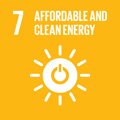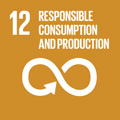- Docente: Ernesto Salzano
- Credits: 9
- SSD: ING-IND/25
- Language: English
- Moduli: Ernesto Salzano (Modulo 1) Nicola Paltrinieri (Modulo 2) Renata Archetti (Modulo 3)
- Teaching Mode: In-person learning (entirely or partially) (Modulo 1); In-person learning (entirely or partially) (Modulo 2); In-person learning (entirely or partially) (Modulo 3)
- Campus: Bologna
-
Corso:
Second cycle degree programme (LM) in
Chemical and Process Engineering (cod. 8896)
Also valid for Second cycle degree programme (LM) in Environmental Engineering (cod. 8894)
Second cycle degree programme (LM) in Civil Engineering (cod. 8895)
Learning outcomes
The aim of the course is to provide specific knowledge on the Health, Environmental and Safety issues in off-shore operations, also focusing on those related to the production of Oil&Gas resources.
Course contents
The course is composed by different topics as in the following:
Module 1
- Introduction to Offshore Engineering
- Offshore accidents: blowout, fire, explosion, ship collision, worker safety
- Offshore accidents: Case histories
- Fire&ExplosionRiskAssessment: Introduction to combustion safety
- Fire&ExplosionRiskAssessment: Modeling of fire and explosion on offshores
- Ship and drifting object collision
- Dropping object
- Development of accident scenarios
- Barriers and barrier analysis
- Human reliability analysis
- Dynamic risk analysis
- The ocean environment
- Wind. The geostrophic approximation. Geostrophic wind. Measure of the wind. Force of the wind on the structures
- Tides and Wave. Linear Theory. Dispersion relationship. Shallow water and deep water approximation. Wave transformation from offshore to onshore: shoaling-refraction diffraction
Readings/Bibliography
Rausand, M., "Risk Assessment: Theory, Methods, and Applications“, Wiley (2013).
Mannam, S., "Lee’s Loss Prevention in the Process Industry", III Ed., ch. 18/19, (2011).
Speight, J.G., "Handbook of Offshore Oil and Gas", Elsevier (2015).
Paltrinieri, N.; Khan, F.: “Dynamic Risk Analysis in the Chemical and Petroleum Industry”, Elsevier (2016).
Dean, R.G., Dalrymple, R.A., "Water wave mechanics for engineers and scientists", Advanced Series on Ocean Engineering, Vol. 2, World Scientific (1991).
Teaching methods
In-class lessons
Tutorials
Assessment methods
Achievements will be assessed by the means of a written test .
The written test will consist of questions (both multiple choice and open questions).
The exam is set to evaluate the students' knowledge-level, analysing and synthesizing abilities, and technical communication skills.
Higher grades will be awarded to students who demonstrate an organic understanding of the subject, a high ability for critical application, a clear and concise presentation of their ideas and an appropriate use of technical language.
Teaching tools
Lecture slides and integrative supporting material will be available on-line.
UniBo credentials are required for access.
A mailing list will be available for communications (https://www.dsa.unibo.it/ ).
Password will be comunicated on the first day of the course
Office hours
See the website of Ernesto Salzano
See the website of Nicola Paltrinieri
See the website of Renata Archetti
SDGs




This teaching activity contributes to the achievement of the Sustainable Development Goals of the UN 2030 Agenda.
